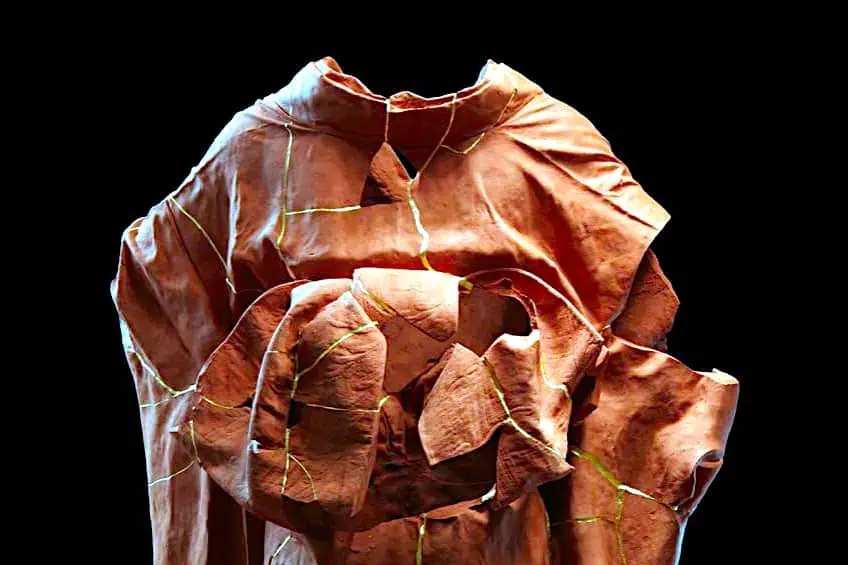Kintsugi – Creating Beauty from Disaster
Most people tend to throw away objects that break and seem irreparable, but not those who embrace the challenge through the art of Kintsugi. The practice of repair is a deeply healing process that can offer both comfort and important philosophies that would benefit your life. In this article, we will explore an ancient Japanese art form called kintsugi that has been practiced for centuries and continues to inspire many today! Read on for more about how this amazing art form emerged and its many benefits.
Kintsugi: An Ancient Japanese Pottery Repair Method
What is kintsugi? Where did it come from? And what is a true kintsugi meaning? To understand a kintsugi meaning, one has to grasp its philosophy, which we will explore below. Kintsugi is an old Japanese art form that is based on the notion of repair. The act of repair is specific to the idea of mending broken pottery using gold as a medium or gold-colored adhesive fluid to fix shattered objects such as vases, bowls, plates, cups, and other objects. Kintsugi is also known as kintsukuroi and has remained an ongoing practice for centuries.
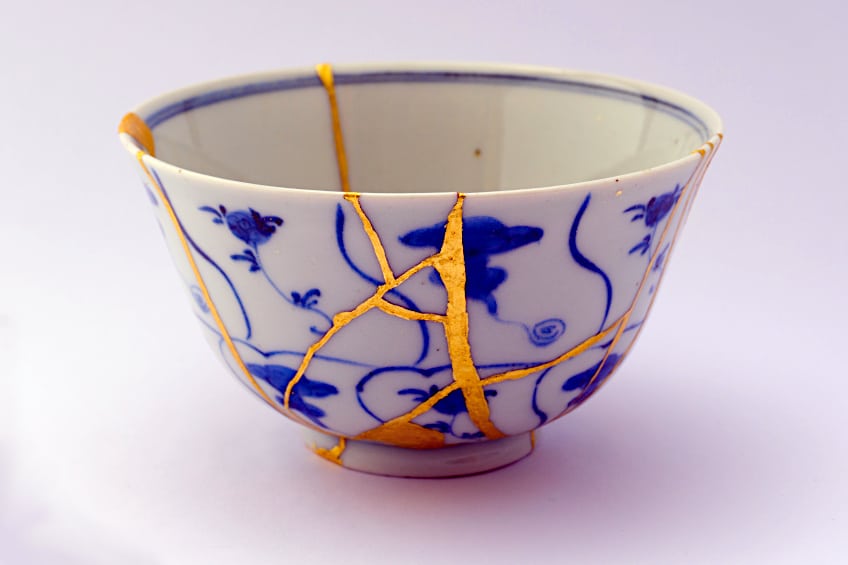
The main idea behind these cracked vessels is to highlight the beauty of the cracks on the once-loved vessels and re-learn how to love something that was once lost or shattered. The artistic process holds much philosophical value and encourages those dealing with trauma, grief, anxiety, and the daily pangs of life to transform such feelings and experiences into beautiful and touching moments.
Kintsugi remains one of the most beautiful and healing art forms to date and has evolved with different artists exploring alternative techniques to produce the same visual effect. Objects repaired with the kintsugi method in mind stand out from the mere concept of “repair for repair’s sake” since it focuses on highlighting the once-broken parts of an object as opposed to concealing it. Below, we will dive into the origins of the art form as well as its philosophy, the different methods of creating kintsugi art, a few famous practitioners, as well as the benefits of the art form.
The Origin of Kintsugi Art
The origins of the gold Japanese cracked pots can be traced back to approximately 5,000 years ago, in Jomon-era Japan, when a sticky substance called urushi lacquer was used as an adhesive to create different hunting weapons.
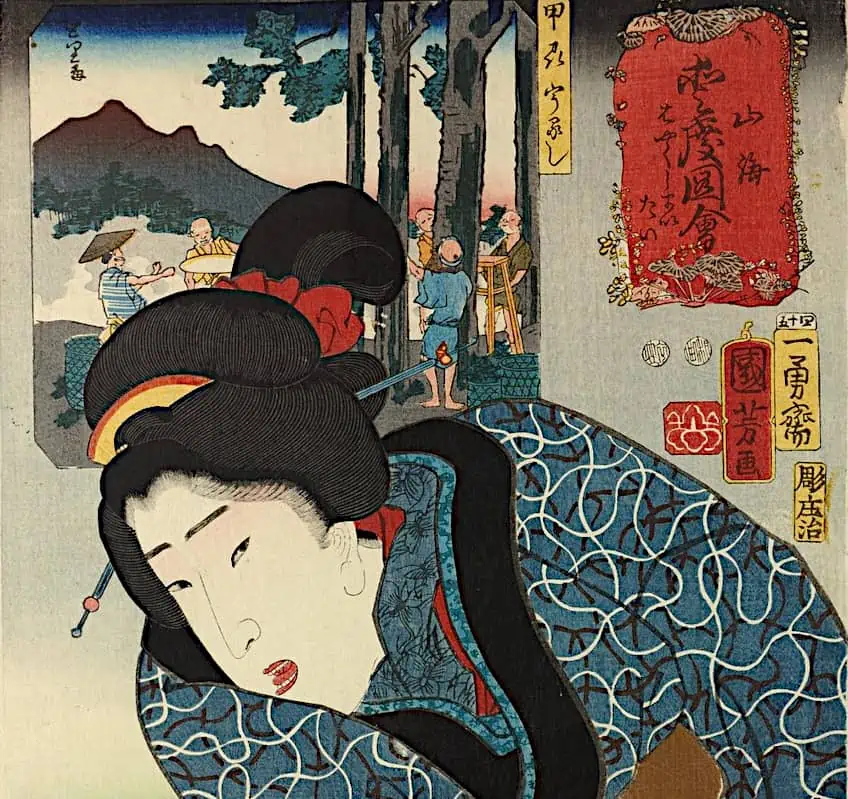
According to the history of kintsugi in art, the art form emerged around the 15th century and is often referenced in relation to the legend of Ashikaga Yoshimasa who sent his cracked tea bowl, called a chawan, for repairs in China. Ashikaga Yoshimasa was identified as a shogun, which traditionally refers to a Japanese dictator. When he received his bowl, he discovered that it was fixed in an unaesthetic manner with metal staples, which was displeasing to the eye. Fed up with his then-ruined chawan, Yoshimasa sought out an alternative method, which is today known as kintsugi, and made the most out of a botched repair job.
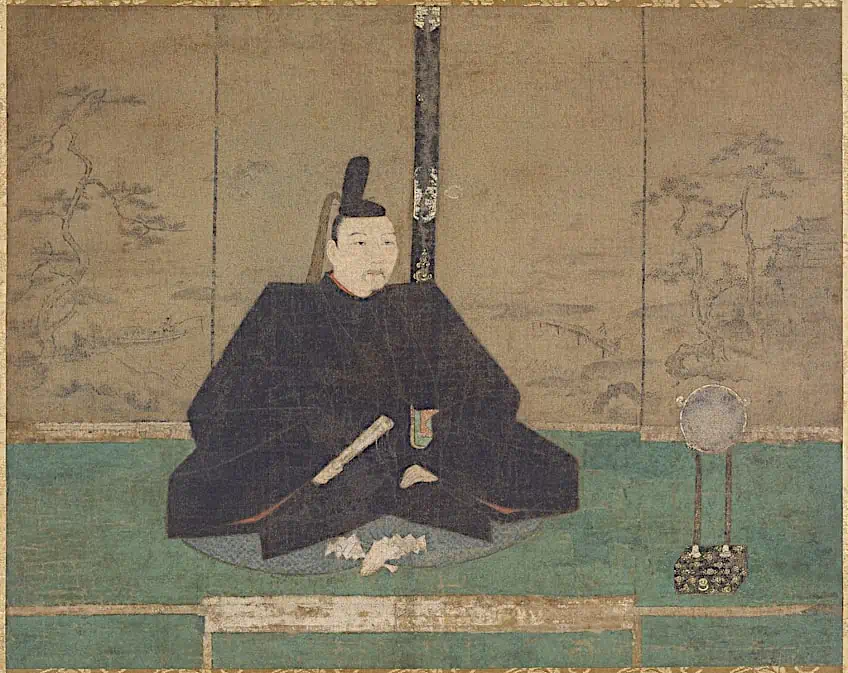
Lacquerware and lacquer-decorated objects were traditional art forms in Japan from which kintsugi emerged. Kintsugi is also thought of as a practice that combined the art of lacquerware and the concept of “beautifying” broken objects using lacquer, which was dusted or mixed with a fine gold powder.
During the 17th century, it was believed that a Japanese warrior purposefully purchased shattered and then repaired pottery and other vessels to create kintsugi art. Kintsugi not only became a profitable source of income for Japanese artists but they were also informed by important philosophies which we will dive into below.
Kintsugi Philosophy
The foundations of Kintsugi as an art form were based on a philosophy called wabi-sabi. Which is based on the idea of finding beauty in imperfection. The idea of imperfection is highlighted by Kintsugi bowls, which draw attention to the cracks that remind one of the trauma that the bowl faced upon impact. The philosophy of the Kintsugi bowl lies in its cracks, and also evokes a Japanese expression known as mottainai.
Mottainai refers to the feeling of regret when something goes to waste, or in the case of a precious object, shatters or breaks.
The “waste” is perceived only when the loss is felt by the vision of one’s precious object losing its original form and the process of repair (kintsugi) seeks to emphasize that the form might change but will remain beautiful through its transformation.
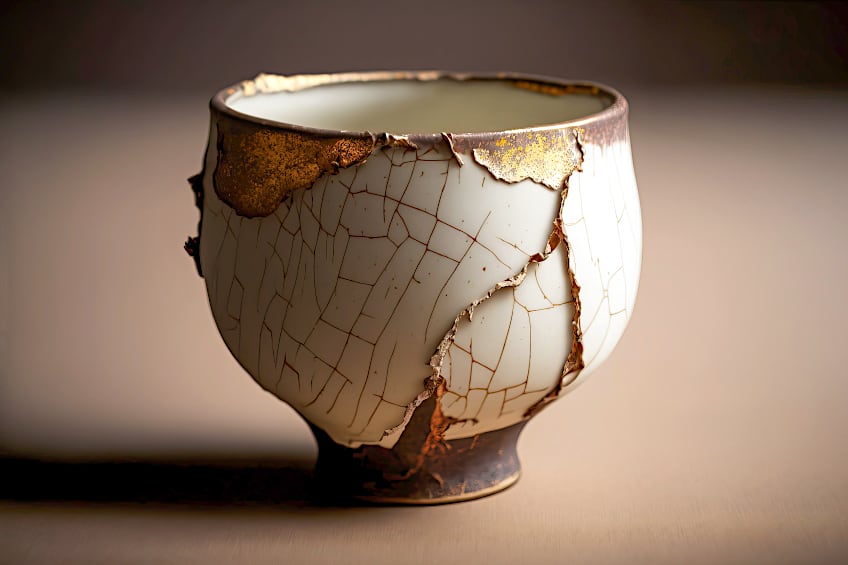
Another important philosophical concept is Mushin, which refers to the idea of acceptance, and with the image of Japanese gold cracks, arrives the practice of accepting a vessel in its entirety and throughout its “falls”. To repair is not only to care, but to accept in spite of the cracks that follow in the fall.
The art of creating Japanese broken pottery further demonstrates the philosophy of non-attachment and the extension of an artwork’s life by highlighting an object’s flaws. Mushin is also interesting since it presents a duality of both non-attachment and acceptance of the broken object, yet it attempts to repair the broken object through Kintsugi. The active highlighting of places where an object was once shattered is a beautiful act that is both healing and informative. Below, we will examine a few different kintsugi methods that you can use when exploring how to create Japanese broken pottery.
Kintsugi Methods for Creating Japanese Broken Pottery
Artists around the world use different methods to mend pottery. Traditional methods of kintsugi involve mending broken pottery using a lacquer dusted or mixed with silver, platinum, or gold powders, which are also similar to the lacquer decoration method known as the Maki-e technique. The original kintsugi method involved the use of urushi lacquer and rice flour, which acted as a binding agent to join ceramic pieces together.
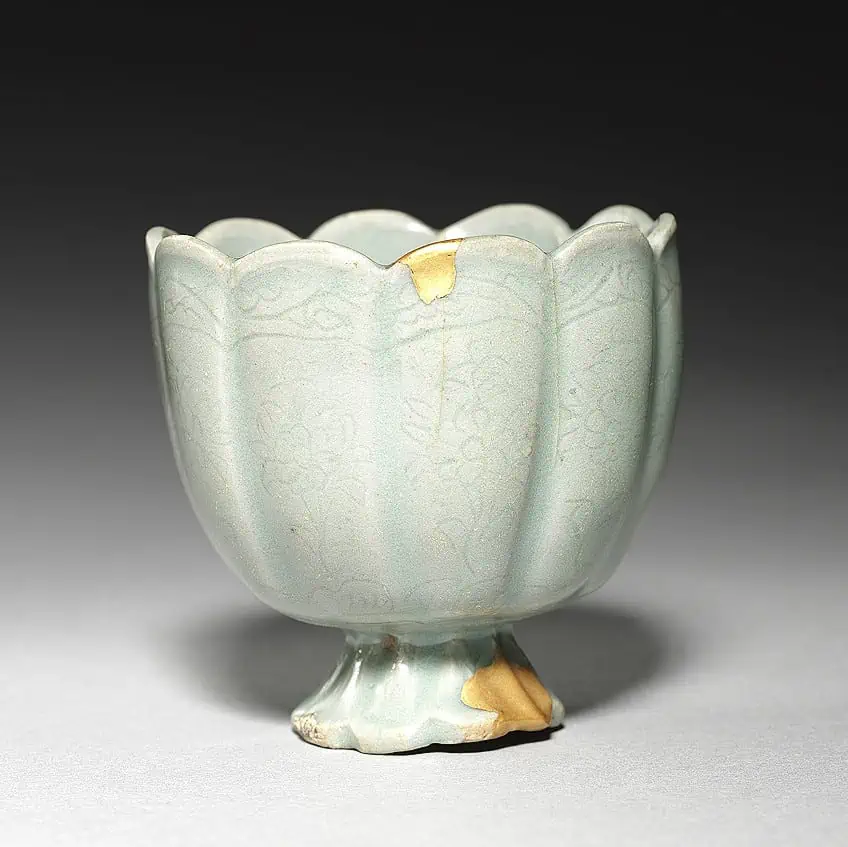
Below we will take a look at the different methods that artists who practice kintsugi use to mend pottery and highlight the “beauty in the broken”.
The Crack Method
The crack method is a common kintsugi method that involves gluing objects back together using an adhesive that is tinted gold. As mentioned above, this traditional method involves the mixture of golden or metallic powders in an adhesive to create such an effect.
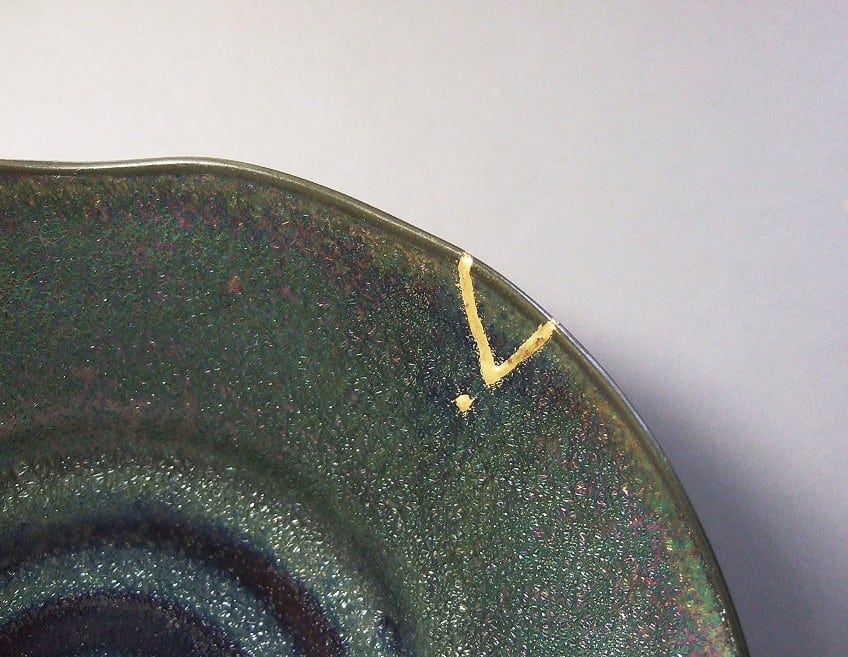
The Make Naoshi Method
This method is useful when your broken pot or vessel is missing pieces and involves re-creating the missing pieces using either epoxy or resin to fill in the missing spaces. The Makienaoshi technique is utilized on objects that have been shattered beyond repair.
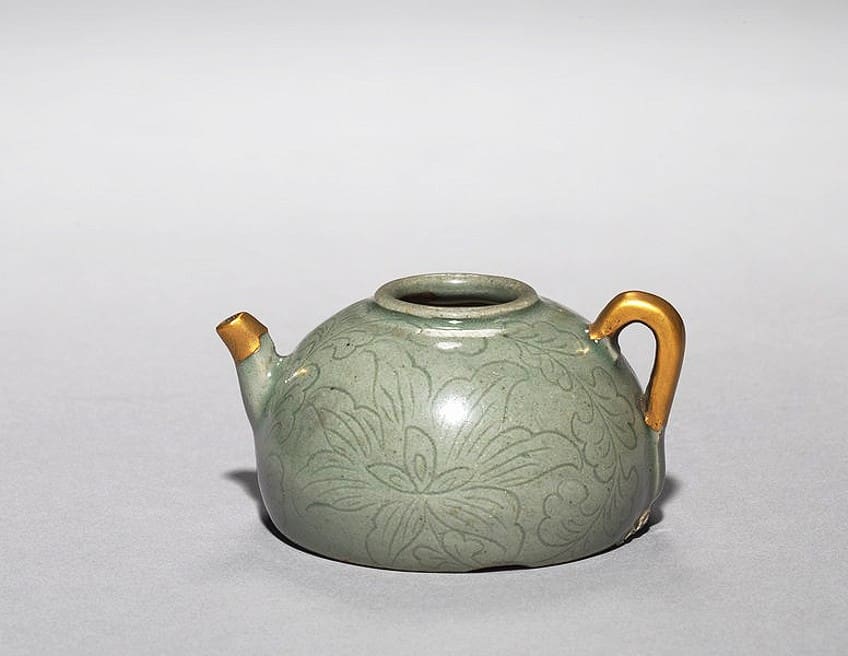
The Joint-Call Method
The joint-call method involves selecting two broken pieces from two different ceramic vessels and combining them using your kintsugi adhesive mixture to make one unified object. The most difficult part of this method involves locating two different pieces that fit together perfectly.
For those less inclined to perfection, one does not have to spend too much time making the pieces fit together perfectly, rather, one can use the golden adhesive to fill in the spaces between the broken ceramic pieces.
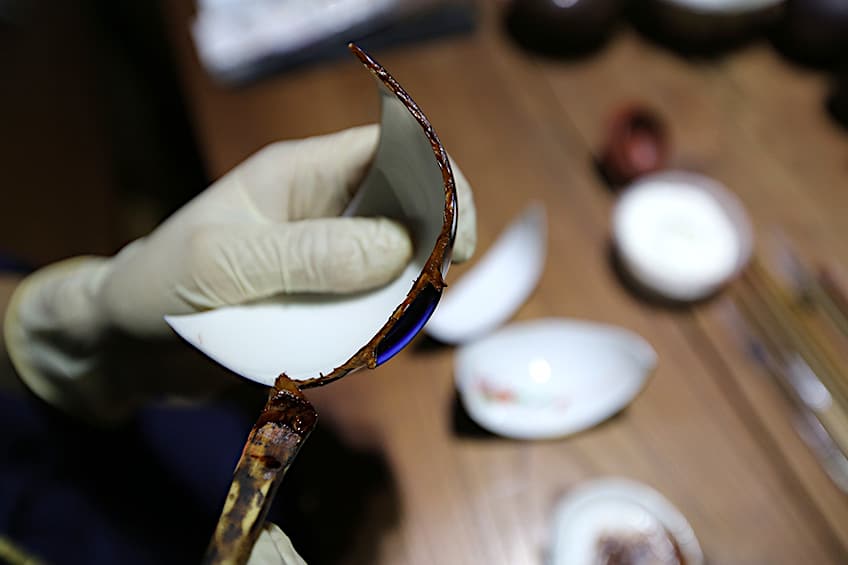
Famous Kintsugi Artists
Now that you have a broad overview of the art of kintsugi and the different methods used to practice it, you can now explore some of the best Modern and Contemporary Kintsugi artists of the 21st century whose creative approaches to the art form have helped evolve it.
Bouke de Vries (1960 – Present)
| Artist Name | Bouke de Vries |
| Date of Birth | 1960 |
| Date of Death | Present |
| Nationality | Dutch |
| Associated Movements, Themes, and Styles | Kintsugi, Modern art, Contemporary art, history, and beauty |
| Mediums | Sculpture |
This famous kintsugi pottery artist, Bouke de Vries, transforms broken ceramic objects into deconstructed sculptures. De Vries’ incredible sculptures take on different forms yet retain the traditional method of kintsugi and its philosophy, which relies on the beauty of imperfection. De Vries also combines figures with vessels and art objects in his sculptures, which adds an extra dimension to the art of Kintsugi.
Yee Sookyung (1963 – Present)
| Artist Name | Yee Sookyung |
| Date of Birth | 1963 |
| Date of Death | Present |
| Nationality | Korean |
| Associated Movements, Themes, and Styles | Kintsugi, history, spirituality, culture, Modern art, and Contemporary art |
| Mediums | Sculpture and performance |
Yee Sookyung Is a talented surrealist sculptor and kintsugi pottery artist who makes use of the crack method using 24-karat gold. The talented Korean artist transforms ordinary vessels into sculptures that she calls “translated vases”. These “translated vases” work as allegories and metaphors of the struggle that life presents and reveals the ability of one to overcome suffering.
Sookyung uses multiple broken objects to form a single sculpture, which not only exemplifies the philosophy of kintsugi art but also adds to it. Her works are an excellent example of a creative way in which one can use the crack technique to create imaginative sculptures.
Rachel Sussman (1975 – Present)
| Artist Name | Rachel Sussman |
| Date of Birth | 1975 |
| Date of Death | Present |
| Nationality | American |
| Associated Movements, Themes, and Styles | Kintsugi, Modern art, Public art, Street art, and Contemporary art |
| Mediums | Photography and research |
Rachel Sussman is an innovative New York-based artist who utilizes the streets in conjunction with the Kintsugi method to fall in the cracks of the urban environment. Sussman takes Kintsugi to the next level by making the art form more visible to the public and thus invites the public to celebrate perseverance by looking at cracks in the urban environment through a new lens instead of looking at it through a lens of something that requires repair.
Sussman’s works are an example of how kintsugi has been applied in the Contemporary era by shifting the art form from pottery to urban architecture.
Sussman thus adopts the urban environment as her playground through which she can explore sculpture, street art, and the traditional practice of kintsugi.
Tomomi Kamoshita (1977 – Present)
| Artist Name | Tomomi Kamoshita |
| Date of Birth | 1977 |
| Date of Death | Present |
| Nationality | Japanese |
| Associated Movements, Themes, and Styles | Kintsugi, Modern art, and Contemporary art |
| Mediums | Jewelry design, ceramics, and pottery |
Tomomi Kamoshita is a famous Japanese kintsugi artist who makes use of multiple ceramic objects and the kintsugi pottery process to create beautiful shimmering jewelry pieces. Kamoshita is influenced by her personal philosophy, which is informed by an identification of how the waves of life can take away the joy from a person, but can also greatly benefit an individual. Kamoshita thus elevates the art of Kintsugi by creating imaginative jewelry designs and earrings that are incredibly unique and not only conveys the philosophy of kintsugi but also elevates the art form to a wearable piece of art.
Kamoshita’s jewelry is one way in which kintsugi has evolved beyond pottery and into Contemporary fashion.
Tatiane Freitas (Present)
| Artist Name | Tatiane Freitas |
| Date of Birth | n.d. |
| Date of Death | Present |
| Nationality | Brazilian |
| Associated Movements, Themes, and Styles | Kintsugi, Modern art, and Contemporary art |
| Mediums | Sculpture, and furniture design |
Tatiane Freitas combines the tradition of Kintsugi with a contemporary approach to furniture design. Freitas combination of transparent materials with broken objects as a form of kintsugi. Not only does Freitas bring up the theme of transparency in kintsugi art, but she also highlights it through the use of transparent acrylic resin instead of the traditional gold adhesive.
Freitas turns the art of Kintsugi on its head by prioritizing the role of absence in brokenness instead of highlighting the cracks with gold.
The Benefits of Making Kintsugi Pottery
Practicing the art of Japanese Kintsugi pottery teaches one many universal lessons that are worth remembering. Not only does the process teach one how to build resilience, but it also teaches one how to find beauty in broken objects and see beauty in imperfection. Each kintsugi-produced artwork is unique due to the cracks formed from the points of impact when a pot falls or receives an impact. Similar to the cracked pots, the human experience is also imperfect. By holding a positive vision and seeing the “Japanese gold cracks” in all things, it is possible to avoid a victim mindset and see the benefit of both positive and negative experiences.
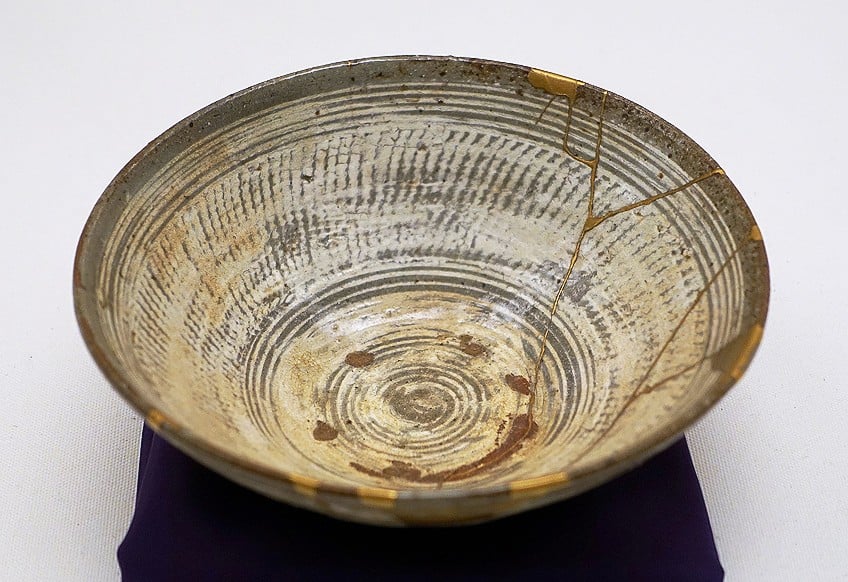
By practicing the art of Kintsugi, one also learns the art of patience, which is incredibly important when it comes to creating works informed by deep philosophical insights.
By embracing the Japanese spirit of Mushin, one can learn the value of having compassion and sensitivity towards oneself. The concept of fate is also highlighted since many events in life can derail a person and lead one to focus on the negative aspects of life. Kintsugi thus presents a message of hope, which can be beneficial to developing a healthy mental state. Another important lesson that one can learn from Kintsugi is the philosophy of gaman, which translates to living with resilience and occupying a state of meditation through visualization or breathing techniques.
By building one’s resiliency and patience, one can learn how to effectively respond to life’s stresses.

The art of Kintsugi also values the practice of yuimaru, which means to care for one’s inner circle by valuing the practice of togetherness as demonstrated by the act of repair in kintsugi. Yuimaru promotes the idea that when one takes care of the inner circle, one also takes care of oneself. Learning to love oneself is one of the first steps to being kinder and creating a good support system from which other people can also benefit.
It is evident that the art of Kintsugi is more than just a profitable art practice or a fun hobby. The art of Kintsugi is an important form of self-care and philosophy from which one can learn a great deal from. By embracing the value that kintsugi has, one can embrace a positive mindset and cultivate a culture of art that extends beyond a commercial approach. We hope that this article has inspired you to try your hand at kintsugi, and find other alternative ways that you can elevate the medium and cultivate your inner world.
Take a look at our what is kintsugi webstory here!
Frequently Asked Questions
What Is Kintsugi?
Kintsugi is recognized as a Japanese art form, which is also called kintsukuroi. Kintsukuroi involves the repair of broken pottery or vessels and relies on the philosophy known as wabi-sabi. The act of repair is informed by the use of a lacquer that is traditionally mixed with metallic powders such as gold to highlight the broken parts of an object, and thus highlight the beauty in imperfection.
How Do You Make Kintsugi Art?
Kintsugi art can be produced using a variety of methods. The most popular method of creating Japanese broken pottery involves intentionally shattering a vessel or ceramic object and then repairing the pieces using an adhesive. This adhesive mixture often includes resin combined with a metallic powder or a gold-tinted resin to highlight the cracks on the object. Other techniques one can apply when creating kintsugi art include the crack approach, the piece method, and the joint-call technique.
What Is the Best Adhesive for Making Kintsugi Pottery?
The best adhesive for making kintsugi pottery, as opposed to the traditional urushi lacquer, is a clear epoxy resin mixed with gold pigment.
Liam Davis is an experienced art historian with demonstrated experience in the industry. After graduating from the Academy of Art History with a bachelor’s degree, Liam worked for many years as a copywriter for various art magazines and online art galleries. He also worked as an art curator for an art gallery in Illinois before working now as editor-in-chief for artfilemagazine.com. Liam’s passion is, aside from sculptures from the Roman and Greek periods, cave paintings, and neolithic art.
Learn more about Liam Davis and about us.
Cite this Article
Liam, Davis, “Kintsugi – Creating Beauty from Disaster.” artfilemagazine – Your Online Art Source. July 20, 2023. URL: https://artfilemagazine.com/kintsugi/
Davis, L. (2023, 20 July). Kintsugi – Creating Beauty from Disaster. artfilemagazine – Your Online Art Source. https://artfilemagazine.com/kintsugi/
Davis, Liam. “Kintsugi – Creating Beauty from Disaster.” artfilemagazine – Your Online Art Source, July 20, 2023. https://artfilemagazine.com/kintsugi/.


